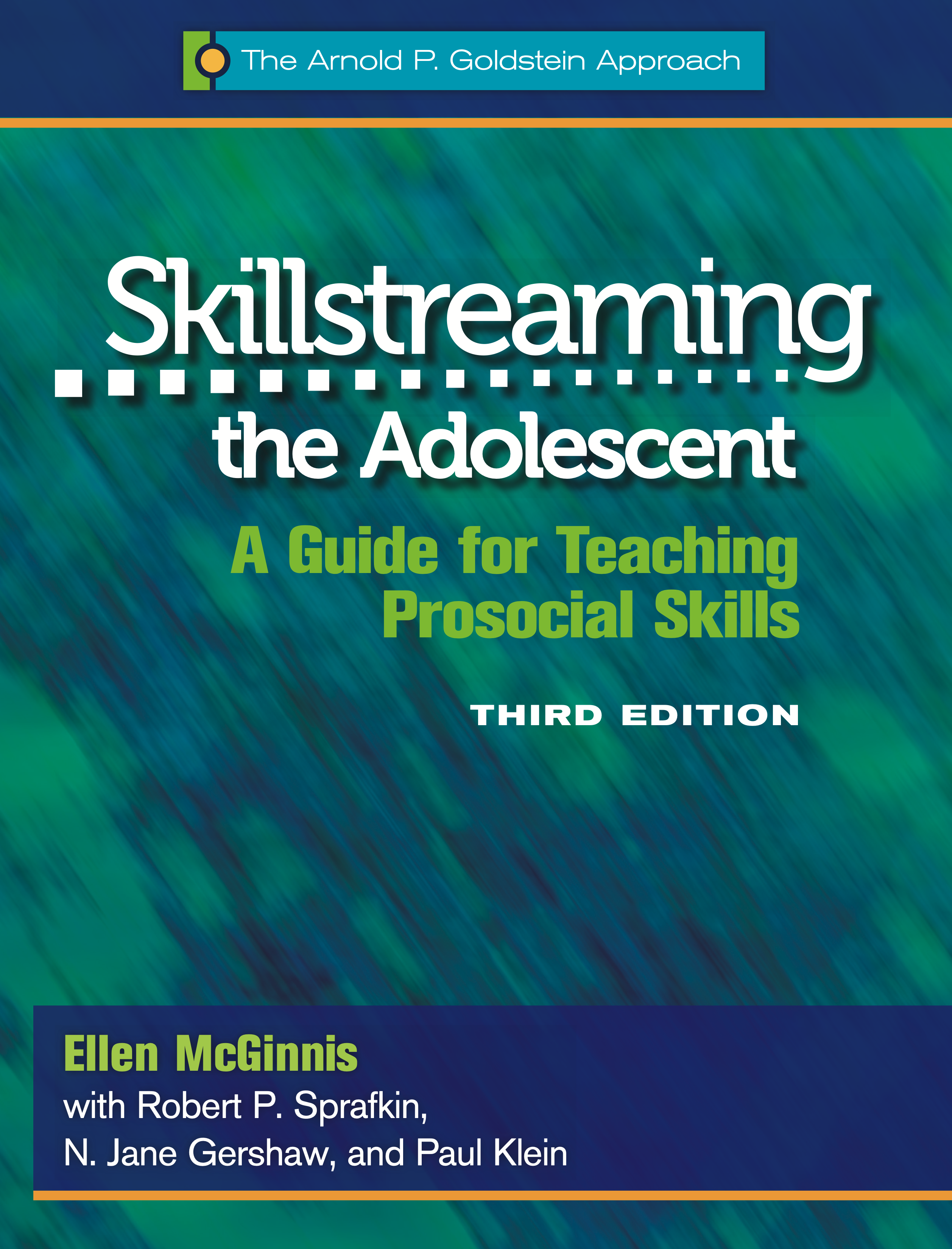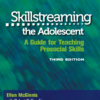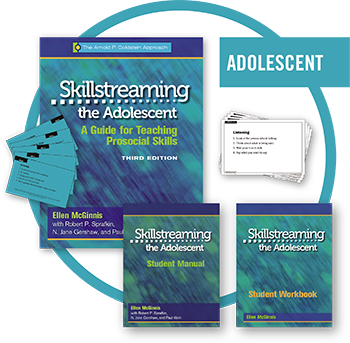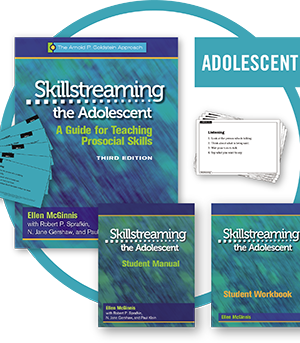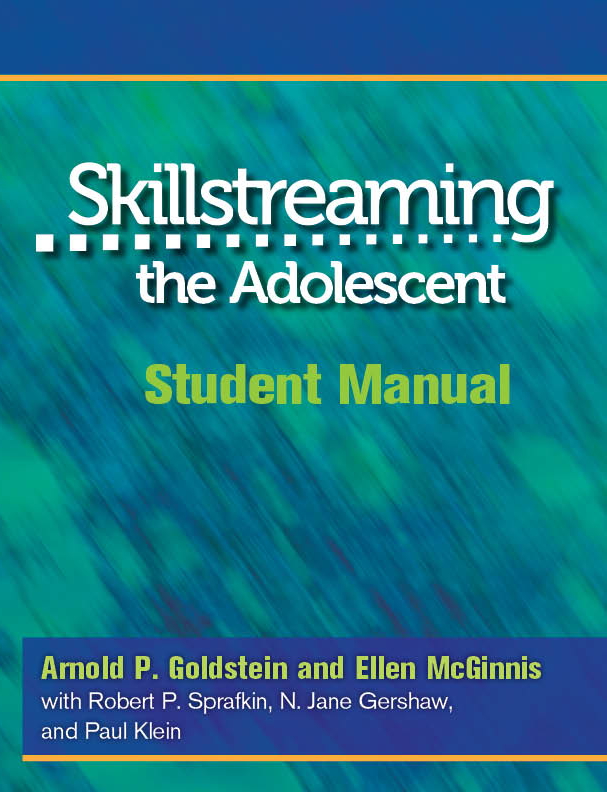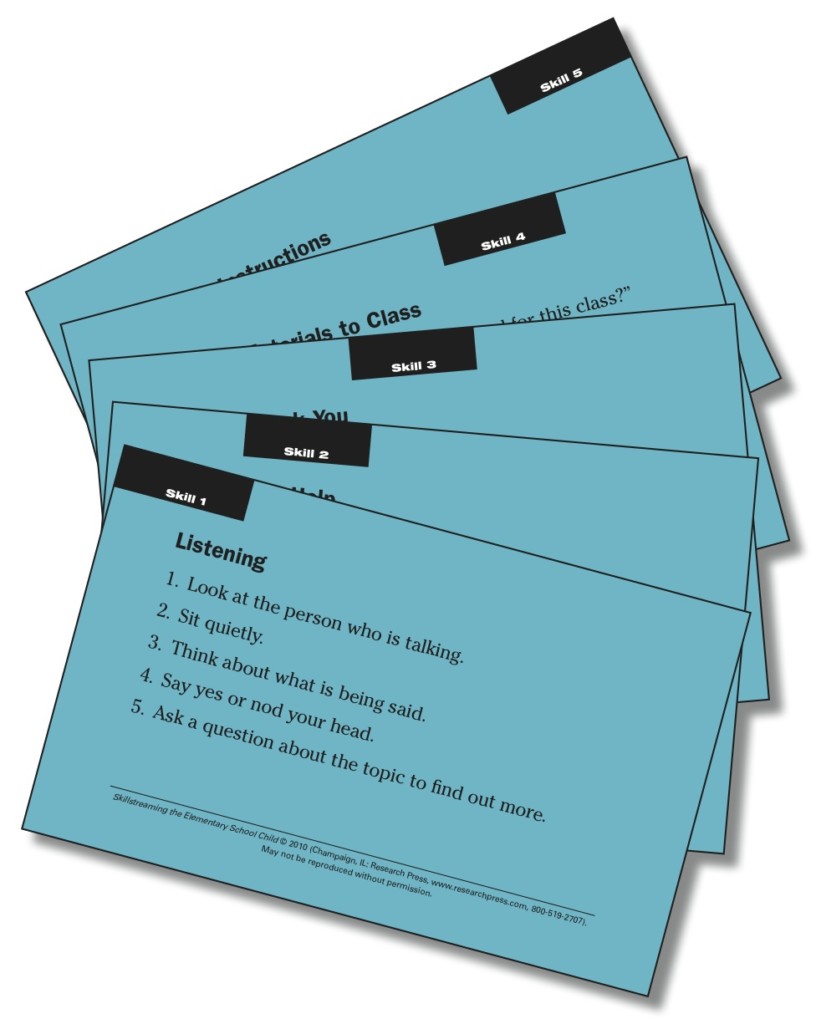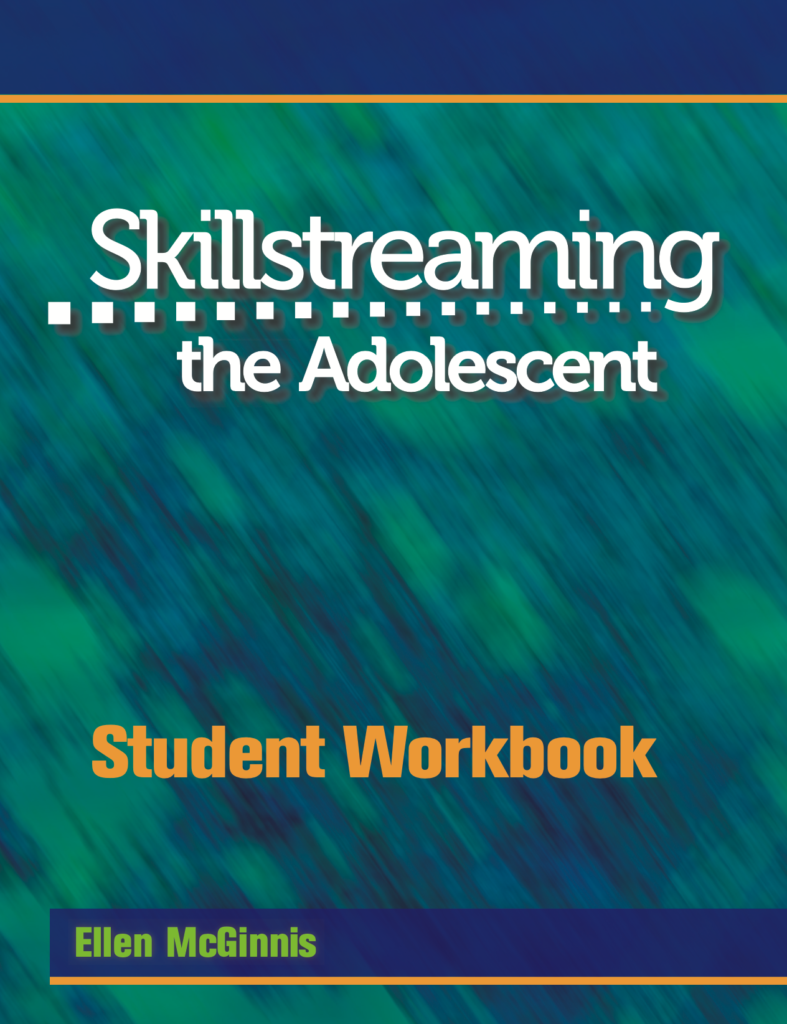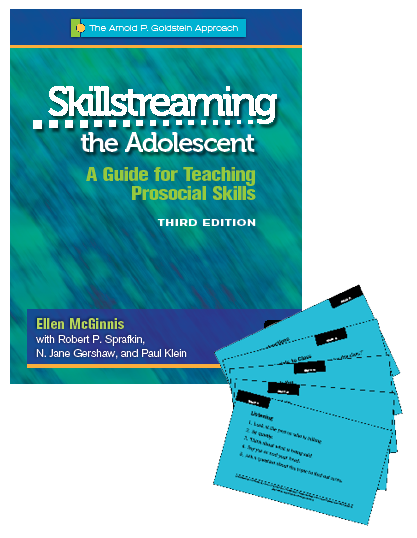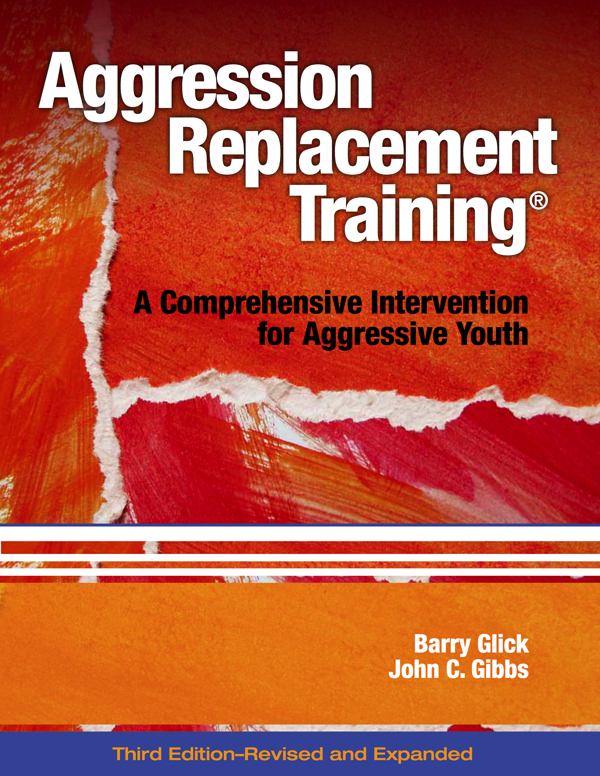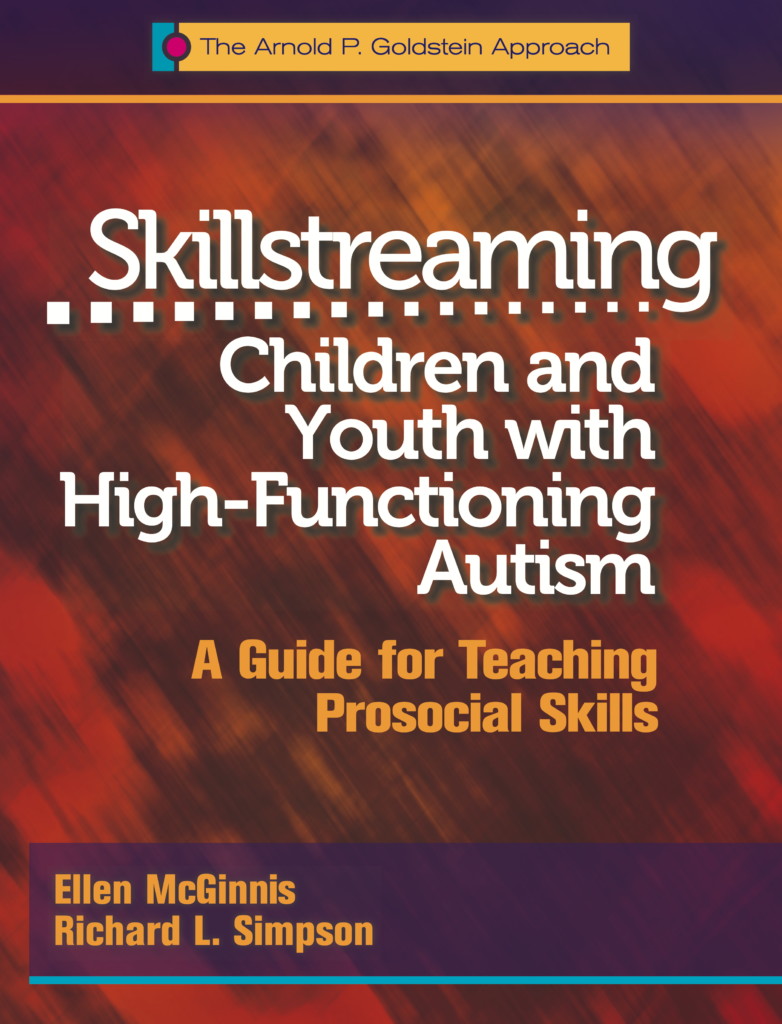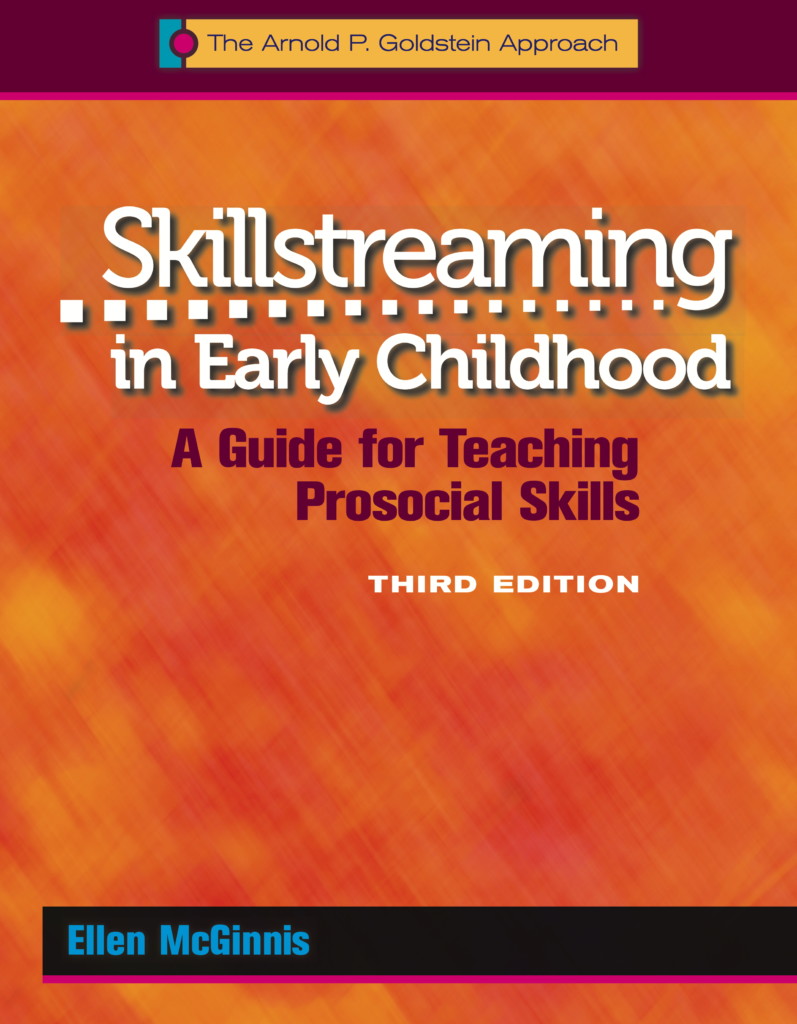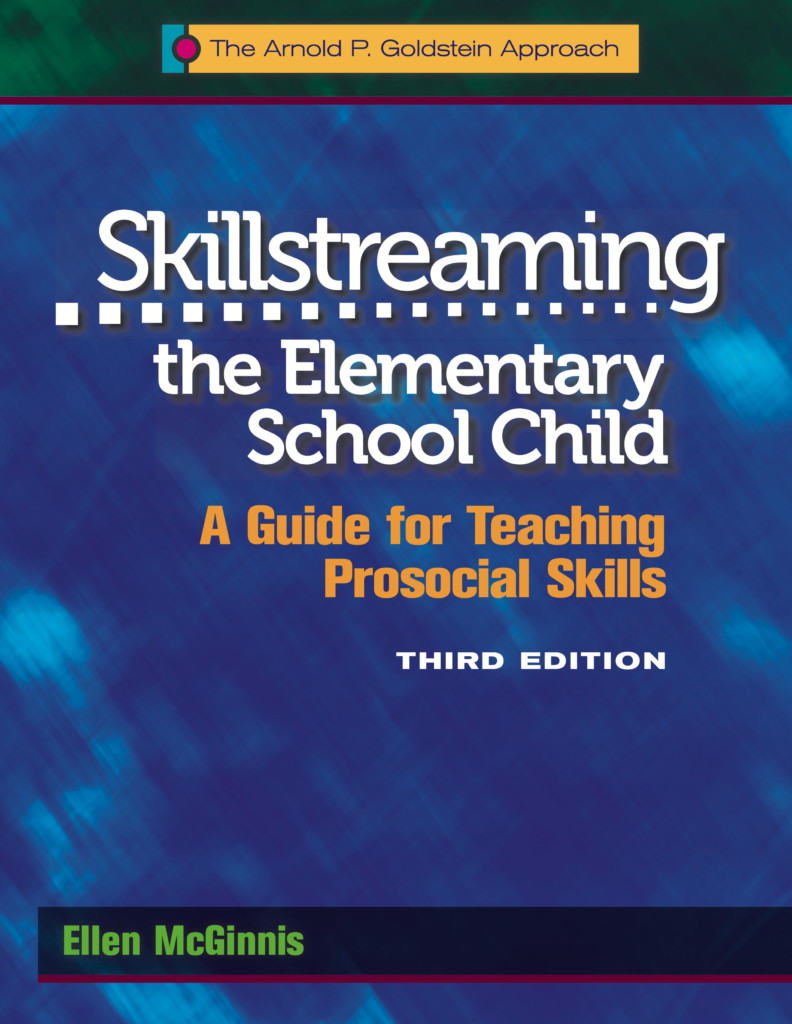Skillstreaming is a prosocial learning program designed to help children and youth learn positive ways to have their needs met. Skillstreaming the Adolescent employs a four-part training approach—modeling, role-playing, performance feedback, and generalization—to teach essential prosocial skills to adolescents.
This book provides a complete description of the Skillstreaming program, with instructions for teaching 50 prosocial skills.
Adaptable for a variety of situations, Skillstreaming is ideal for small group instruction for children who have common social needs. Often used by counselors and others, the Skillstreaming program is structured to be a targeted, social-emotional learning intervention. Specific Skillstreaming skills can also be taught in whole class sessions by counselors.
The Skillstreaming program at every age level is designed to be easily implemented when conducted by a group leader who has experience in working with small groups. Training is also available for school districts and other organizations when Skillstreaming will be implemented through multiple practitioners.
Skill Cards, Student Workbooks and Skill Posters reinforce the key objectives in the Skillstreaming program.
NOTE: It is essential for successful implementation of this curriculum to first have the program book (Skillstreaming the Adolescent: A Guide for Teaching Prosocial Skills) before attempting to utilize other Skillstreaming products.
For a wide range of adolescent learning programs and settings, Skillstreaming is a trusted and proven learning asset. Coming soon: Skillstreaming the Adolescent Lesson Plans and Activities created to help sustain skill instruction, enhance students’ skill mastery, and most important – to refine skill use for dealing with more complex, real-life situations in and outside of the classroom. Also helps to prevent school and behavioral failure while also laying the foundation for education and life success.
The scope of the Skillstreaming program was initially used as a strategy to remediate behavioral skill deficits in select groups of children. It has become a widely accepted social-emotional strategy applied in preschools, public schools, juvenile settings and beyond.
Part 1: Skillstreaming Program Content and Implementation
Chapters on effective Skillstreaming arrangements, Skillstreaming teaching procedures, refining skill use, teaching for skill generalization, managing behavior problems, Skillstreaming in the school context, and more.
Part 2: Skill Outlines and Homework Reports
Skill outlines are handy one-page summaries for each skill, including skill steps, guidelines for skill instruction, and suggested situations for modeling displays. Homework reports list skill steps and guide students in practicing the skills and evaluating skill use outside the Skillstreaming group.
Skill Areas
- Classroom Survival Skills
- Friendship-Making Skills
- Skills for Dealing with Feelings
- Skill Alternatives to Aggression
- Skills for Dealing with Stress
Appendixes provide all program forms needed to ensure a successful Skillstreaming intervention, plus leader and observer checklists to ensure program integrity.
The widely acclaimed approach developed by Dr. Arnold P. Goldstein and colleagues includes reproducible skill outlines, skill homework reports, and program forms. Reproducible forms and handouts for this title are available on our downloads page.
Shown below is episode two of Prosocially Yours, a podcast produced by Research Press. In this episode, host Elizabeth Hess interviews educator and author, Dr. Ellen McGinnis, about the social-emotional Skillstreaming program.
Praise for the Skillstreaming series
“The third edition of the Skillstreaming series is my first choice as the go-to resource for a research-based, user-friendly, and level social skills curriculum for professionals in all settings serving children and youth.”
Sheldon Braaten, PhD,
Founder and Executive Director,
Behavior Institute for Children and Adolescents
“There are a multitude of social skills programs on the market. . . . This program cuts out the gimmicks, and hammers home what is really needed: Identify the skill that is missing in the student, model it for the student, role-play it with the student, and provide opportunities for them to generalize it to real life situations.”
Nan Gordon, Communiqué

